
Star Wars Episode I: Racer is a 1999 racing video game based on the podracing sequence in the film Star Wars: Episode I – The Phantom Menace. The game features all of the racers and race course on Tatooine from The Phantom Menace. It adds several new courses, on Tatooine and various planets. It has several single player modes, including a tournament mode. The format of multiplayer mode varies by platform. Jake Lloyd and Lewis MacLeod, who portrayed Anakin Skywalker and Sebulba in The Phantom Menace, reprise their film roles in the game.

Micro Maniacs is a racing video game developed by Codemasters for PlayStation and Game Boy Color. It is a spin-off to the Micro Machines games, the main difference being that players control tiny characters where a few racetracks feature the use of vehicles. The North American version was sponsored by Fox Kids, and so the game's name was changed there. It was scheduled to be released in June 2000, but was delayed to late September.
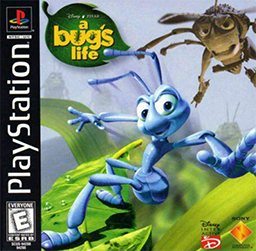
A Bug's Life is a video game based on the Disney/Pixar 1998 film of the same name. It was released for various systems in 1998 and in 1999. The game's storyline is similar to that of the film, with a few changes. After completing levels the player can unlock clips from the film. The PlayStation version was released on the PlayStation Store for the PlayStation 3 and PlayStation Portable on July 27, 2010.

Mickey's Speedway USA is a Disney racing game for the Nintendo 64 and Game Boy Color, developed by Rareware and published by Nintendo under license from Disney Interactive. It is styled after other kart racers such as Mario Kart 64 and Diddy Kong Racing, and features characters from the Mickey Mouse universe racing across the United States. It is Rare and Nintendo's second Disney-themed racing game following Mickey's Racing Adventure (1999).
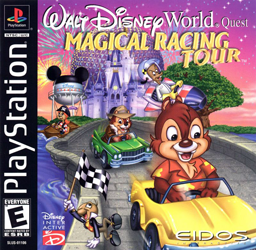
Walt Disney World Quest: Magical Racing Tour, sometimes mislabeled as Disney MT Racing or Walt Disney World: Magical Racing Quest, is a 2000 go-kart racing video game based on attractions at the Walt Disney World Resort. Players compete in races on tracks inspired by attractions such as the Haunted Mansion, Pirates of the Caribbean, Space Mountain and Big Thunder Mountain Railroad to acquire missing parts for the park's fireworks machine, which was accidentally destroyed by Chip 'n' Dale while they were gathering acorns. The game was developed by Crystal Dynamics and published by Eidos Interactive. The Game Boy Color and Dreamcast versions were developed by Prolific Publishing.

Lego Racers is a Lego-themed racing video game developed by High Voltage Software and published by Lego Media in 1999.

Cars is a 2006 adventure racing game published by THQ. The game is based on the 2006 film of the same name. It was released for the PlayStation 2, GameCube, Xbox, Microsoft Windows, Game Boy Advance, Nintendo DS, and PlayStation Portable in June 2006, with versions for the Xbox 360 and Wii released later that year. The Wii version includes functionality geared towards its Wii Remote controller and was a launch game for the system. Taking place after the events of the film, the game follows Lightning McQueen as he participates in the new racing season with his goal set on finally winning the Piston Cup. While doing so, he races and trains with the local community of Radiator Springs.
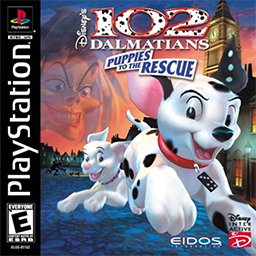
Disney's 102 Dalmatians: Puppies to the Rescue is a platform video game developed by Toys for Bob and published by Eidos Interactive for Microsoft Windows, PlayStation, Dreamcast and Game Boy Color. It is loosely based on the live-action Disney movie 102 Dalmatians.

Magical Tetris Challenge is a puzzle game by Capcom for the Nintendo 64, Game Boy Color, and PlayStation. It is a version of Tetris featuring Disney characters. It is one of the few Nintendo 64 games to be entirely in 2D, in addition to being Capcom's first game for the console.
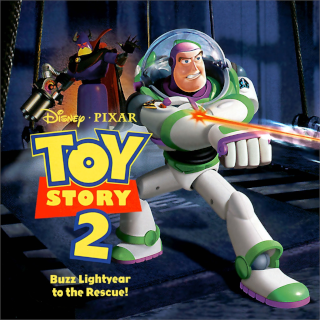
Toy Story 2: Buzz Lightyear to the Rescue! is a platform game developed by Traveller's Tales and published by Activision and Disney Interactive. Based on Disney/Pixar's 1999 computer animated film Toy Story 2, it was released for the Nintendo 64, PlayStation, Microsoft Windows, and Macintosh in late 1999, while a Dreamcast version followed in 2000. The computer versions were released under the title Disney/Pixar's Action Game, Toy Story 2. A different version, a side-scrolling platform game titled Toy Story 2, was also released for the Game Boy Color in 1999.
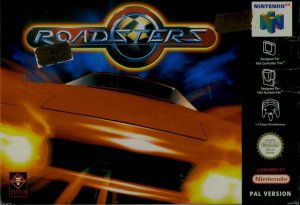
Roadsters is a racing game released by Titus Software for Nintendo 64 in 1999, and for PlayStation, Dreamcast and Game Boy Color in 2000. It is a car racing game that features both licensed cars from manufacturers and unlicensed cars from imaginary manufacturers that are based on and bear great resemblance to their equivalent, real car models. The game also includes a multi-player mode supports up to 2 human players that can compete in any of the available circuits with 4 more CPU controlled racers. A PlayStation 2 version was originally planned to release on April 11, 2001.

X-Men: Mutant Academy is a fighting game developed by Paradox Development published by Activision. It was released for PlayStation and Game Boy Color on July 14, 2000, as a tie-in to the film X-Men, which was released on the same date. A version for the Nintendo 64 had been in development prior to the game's release, but was ultimately cancelled.

Test Drive 6 is a racing video game developed by Pitbull Syndicate for PlayStation, Microsoft Windows and Dreamcast. In the United States the game was published by Infogrames North America, while in Europe the game was published by Cryo Interactive. The game featured 37 licensed cars, plus four police car variants. As a first for the series, cars from General Motors are not playable in this game, instead they appear as traffic cars. The soundtrack featured industrial rock and techno music from artists such as Fear Factory, Lunatic Calm and Cirrus.

NBA Hoopz is a 2001 basketball video game published by Midway. It is the sequel to NBA Hangtime and NBA Showtime: NBA on NBC. Hoopz was the only 3-on-3, arcade-style basketball video game available during the 2000–01 NBA season. Shaquille O'Neal is featured on the game cover.

Looney Tunes Racing is a kart racing video game released for the PlayStation and Game Boy Color and published by Infogrames. It was released in 2000 in North America and in 2001 in Europe.

Micro Machines V3 is a racing video game developed by Codemasters and Novalicious for PlayStation, Microsoft Windows, Nintendo 64, and Game Boy Color.

Buzz Lightyear of Star Command is a platform/shooter video game developed by Traveller's Tales and published by Disney Interactive and Activision in 2000. It is based on the animated series of the same name, a spin-off of the Toy Story franchise. It was released for Dreamcast, PlayStation, Microsoft Windows, and Game Boy Color. A version for the Nintendo 64 was planned but was later cancelled for unknown reasons.
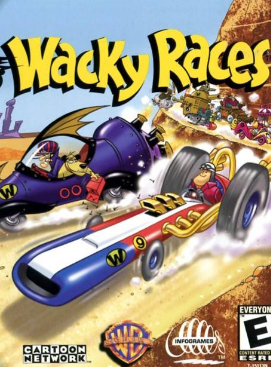
Wacky Races is a racing video game developed by Appaloosa Interactive for PC and PlayStation and by Velez & Dubail for the Game Boy Color. It was published by Infogrames in 2000. An enhanced version of the game, called Wacky Races: Starring Dastardly and Muttley, was released for Dreamcast and PlayStation 2 in the same year.
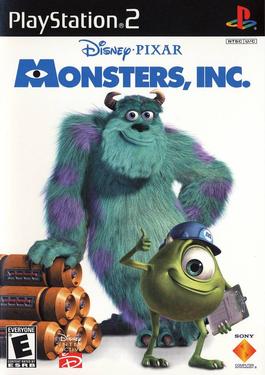
Monsters, Inc. is a 2001 platform game based on the 2001 film of the same name released for Game Boy Color, Game Boy Advance, and PlayStation 2. The Game Boy Color and Game Boy Advance versions of the game were released in October 26, 2001, in North America and in February 1, 2002, in Europe. The PlayStation 2 version was only released in North America in March 20, 2002. The Game Boy Advance version was also released on a twin pack cartridge bundled with Finding Nemo in 2005.

MTV Sports: Pure Ride is a snowboarding video game developed by Radical Entertainment and Visual Impact and published by THQ for the PlayStation and Game Boy Color in 2000.




















